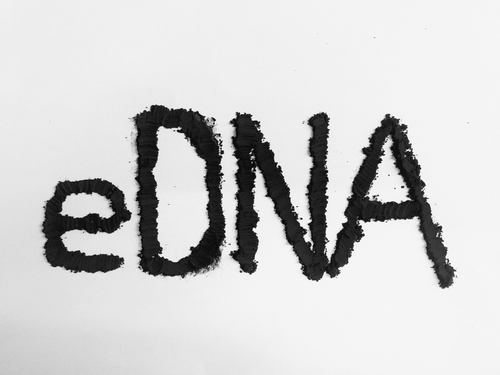


In recent years, the use of environmental DNA (eDNA) to investigate biodiversity has gained considerable interest (Thomsen and Willerslev, 2015; Mauvisseau et al., 2022). It allows for the indirect detection of species but it requires a sound understanding of eDNA behaviour and persistence in the environment. This is, however, a complex task because eDNA may be found in several states (e.g., dissolved, adsorbed, intracellular or intraorganellar), which display specific decay rates controlled by environmental factors (Harrisson et al., 2019; Mauvisseau et al. 2022). In the environment, dissolved DNA may interact with the surfaces of various sorbents, including mineral and organic particles/colloids. Current knowledge on eDNA sorption suggests that eDNA–sorbent interactions are controlled by electrostatics as well as inner-sphere complex formation (Mauvisseau et al., 2022).
In this context, the work undertaken by Jelavic et al. (2022), focused on the adsorption of eDNA by lesser-investigated carbonaceous materials (CMs), namely soot and charcoal, as common non-mineral environmental surfaces.
The authors aimed to study the adsorption capacity of soot and charcoal surfaces with respect to eDNA, in relation to solution parameters (i.e., pH, ionic strength, concentration/type of cations), time and eDNA length, under both non‐equilibrium and equilibrium conditions. Using such an approach, Jelavic et al. demonstrated the large adsorption capacities of CMs and the strong binding of DNA to these sorbents. The authors did not provide definitive conclusions on the mechanisms of eDNA sorption onto CMs. However, they provided new elements suggesting that, along with electrostatic interactions, hydrophobic interactions might play an important role in the adsorption of eDNA to CMs such as soot and charcoal.
Altogether, the results presented in this paper highlight the relevance of CMs as sources of biodiversity information. In addition, it is likely that those results will also prove useful for the community to improve protocols for eDNA extraction from environmental samples that contain high fractions of CMs, e.g. urban soils.
References
Harrison JB, Sunday JM, Rogers SM (2019) Predicting the fate of eDNA in the environment and implications for studying biodiversity. Proceedings of the Royal Society B: Biological Sciences, 286, 20191409. https://doi.org/10.1098/rspb.2019.1409
Jelavic S, Thygesen LG, Magnin V, Findling N, Müller S, Meklesh V, Sand KK (2022) Soot and charcoal as reservoirs of extracellular DNA. ChemRxiv, ver. 5 peer-reviewed and recommended by Peer Community in Ecotoxicology and Environmental Chemistry. https://doi.org/10.26434/chemrxiv-2021-9pz8c-v5
Mauvisseau Q, Harper LR, Sander M, Hanner RH, Kleyer H, Deiner K (2022) The Multiple States of Environmental DNA and What Is Known about Their Persistence in Aquatic Environments. Environmental Science & Technology, 56, 5322–5333. https://doi.org/10.1021/acs.est.1c07638
Thomsen PF, Willerslev E (2015) Environmental DNA – An emerging tool in conservation for monitoring past and present biodiversity. Biological Conservation, 183, 4–18. https://doi.org/10.1016/j.biocon.2014.11.019
The authors have answered all comments arisen by the referees. Even though i think that authors should have written parts of their manuscript with more nuance than they do (especially the parts related to modeling aspects and to ensuing conclusions on adsorption mechanisms, see comments by referee 1) and that they should have added the references mentioned by the referees so as to indicate refined ways of addressing physicochemical properites of their sorbing substrate, it is my opinion that the revised version of the manuscript can now be accepted for publication.
The revised version provided by the authors and their detailed answers to my comments significantly enhance the quality of the paper. I am still not fully convinced by all the aspects tackled in this manuscript but I think that this piece of work can be useful for the community and I then am willing to accept the revised version of this manuscript.
DOI or URL of the preprint: https://chemrxiv.org/engage/chemrxiv/article-details/6252a626742e9f5170593352
Version of the preprint: 3
Dear authors,
Please find attached the two reviews that we have managed to obtain for your manuscript. As you will see, the two reviewers raised a number of major issues regarding this manuscript. If you feel that you can respond to these comments, please provide us with a revised version together with a point-by-point answer to reviewers' comments. Please outline every change made in response to their comments and provide suitable rebuttals for any comments not addressed. Please note that your revised submission will be re-reviewed.
Best regards,
Pierre Labadie